Why Is Canada House On Juno Beach In Normandy So Famous?
I’ve often been asked what was the highlight of my recent trip to Normandy. My answer is easy: it was my visit with Nicole Hoffer at her home, Canada House on Juno Beach. Why was the meeting so special? While the house is a private home, it is also one of the most famous houses in Normandy and an important historical site.
It was the first house to be liberated, by sea, on June 6, 1944….the D-Day invasion of Normandy by the Allies. My visit with Nicole was entirely in French and I learned some very interesting things about the house, the German occupation, and the Canadian role in Normandy during World War II.
April 30, 2025 Update:
There will be 2 important ceremonies at Canada House on June 6, 2025 to commemorate the 81st anniversary of the D-Day landings.
- Morning Ceremony (8:00 am)-with the Queen’s Own Rifles of Canada and a delegation from the Regiment de la Chaudière (tbc)
- Lantern Ceremony (9:00 pm)-where a lit lantern from Canada House is taken to the sea. The light stands for our freedom and is a tribute to those who have fallen. Roses are laid on the beach and the bagpipers from Pegasus Pipes and Drums will be in attendance.
Table of contents
*This post contains affiliate links. If you make a purchase through these links, I get a small commission at no extra charge to you. It helps support the running of this website and I do appreciate your help.*
1. Canada House On Juno Beach

Canada House, which is also known as La Maison des Canadiens, or Maison de Queen’s Own Rifles of Canada, faces the eastern shoreline of Juno Beach. It is located in Bernières-sur-Mer, which is just 2.3 kilometres east of the Juno Beach Centre Museum. This half-timbered Normandy-style house is not owned by Canada or Canadians. It is owned by Nicole Hoffer and her two sons.

A week before I headed to Normandy on a recent trip, I contacted Nicole. We chose a mutually convenient day and time to meet at her home and when I arrived, I was warmly welcomed by Nicole and one of her friends.
For about 45 minutes, we sat in the living room and Nicole shared with me the history of the house and what had happened before, during, and after D-Day, June 6, 1944.
2. The History Of Canada House, France
(a) Ownership
Léon Enault was a director of the department stores of the Louvre and Hôtel Crillon in Paris and he owned a hotel in town in the early 20th century. In 1928 he had the original house built with two semi-detached homes for his two grandchildren, Rogers and Denise. They were each given half the house under one roof. This would become known as Canada House.
(b) Denise Side Of The House
Over the next 8 years, there were various owners of this house until 1936, when Edmond and Cécile Hoffer bought the left side of the house, the Denise side, called “L’Étrille” and it has stayed in the family ever since. Their grandson was Hervé and he was the husband of Nicole, the current owner. Hervé died in 2017.
(c) Roger Side Of The House
The Roger side of the house (right side of the house) also had many proprietors and in April 2023, “Villa Les Goélands” was sold to the Cœur de Nacre community. Cœur de Nacre covers 12 kilometres of coastline and has 5 seaside resorts. Bernières-sur-Mer, where Canada House is located, is one of them.
3. German Occupation And Requisition Of Canada House (1943)

Canada House June 6, 1944 (Conseil Régional de Basse-Normandie / National Archives Canada)
During the war, the Germans would ordinarily take over the local château but in this case, the one in town had been destroyed, so they chose the Hoffer’s house in 1943. Hervé’s parents did not live in the house while the Germans occupied it. Nicole said the family lived in Caen (21 km south of Bernières-sur-Mer) and only used this Normandy house as a holiday house.

One of the reasons why the house was never destroyed during the war, while other properties were, was because German troops lived there and it provided an important strategic position. It was in the perfect location, overlooking the beach and the English Channel, so they could see any enemy coming onto the Normandy shores. The front living room window was the ideal place to position machine guns. The Germans occupied the house from 1943-1944.
4. June 6, 1944: D-Day Normandy Invasion
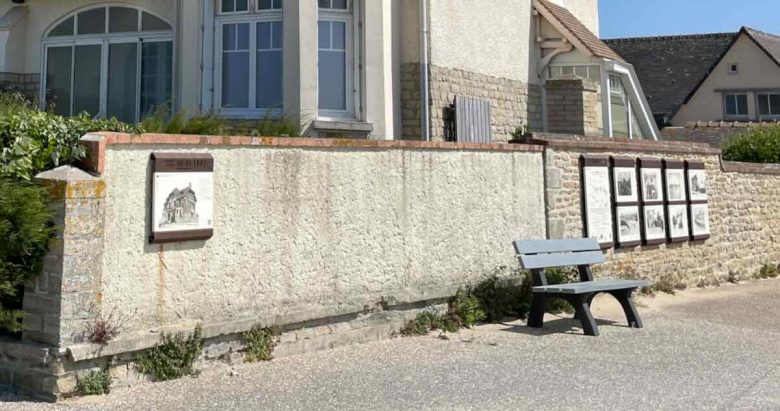
On the stone wall that borders the house, there are a number of photos from the D-Day invasion and the assault on Canada House. As you can see in the photograph near the beginning of this post, the house was damaged but not completely destroyed.
(a) The Normandy Invasion Begins
Before the Normandy invasion on June 6, 1944, the soldiers had seen photos of the Hoffer house, but orders were sent to NOT destroy it. It was still important for the operation because it was in an elevated spot and provided an excellent position for seeing the water and any advancing soldiers. In the early morning of June 6, 1944, the Normandy Landings commenced and the Canadians of the 3rd Infantry Division landed on Juno Beach.
The Queen’s Own Rifles of Canada began the first assault landing on the “Nan” sector of Juno Beach, and then the 8th brigade of the 3rd Infantry Division (La Chaudière regiment) was tasked with taking over Bernières-sur-Mer which was heavily defended by the Germans and their anti-tank walls.
They were supported by the 10th Canadian Armored Regiment (The Fort Garry Horse). Learning about all of these regiments and groups of soldiers was a bit confusing. But their names are incredibly important because they were the ones that succeeded in liberating Bernières-sur-Mer.
(b) Where Is The Seawall Today?
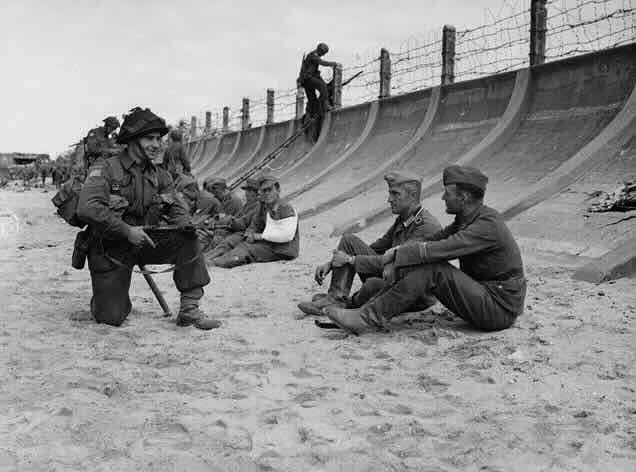
Canadian veterans of the Normandy Invasion who returned to the area often asked what happened to the seawall. It was very important in protecting them from gunfire as they moved inland and approached the house and town. The seawall is now gone because the soldiers advanced and pushed it down and it was eventually covered in sand.
(c) Casualties In Front Of Canada House

German personnel captured on D-Day (Credit: Ken Bell / Canada. Dept. of National Defence / Library and Archives Canada / PA-132474)
By the time the Canadian soldiers had taken over the town from the Germans in the late morning of June 6th, 93 Canadian soldiers had been killed right in front of this house. Many more were wounded. The troops occupied the house and captured the German soldiers stationed there, including ones they found hiding in the cellar. Once they were all taken prisoner, the Allied troops quickly moved on…as the Battle of Normandy had only just begun.
Ever since the house has been liberated it has been known as “Canada House” or “La Maison des Canadiens”.
5. The Hoffers Return To Their House
Once the war was over, there was obviously extensive damage to the town and roads. The house was still standing but also had extensive damage. The French government paid for renovations to the house. It took a number of years before the Hoffer family could return and live in their house. This didn’t occur until around 1950.
6. Visitors To Maison des Canadiens
(a) Veterans Visit Juno Beach In Greater Numbers
Hervé inherited the house from his parents, Georges and Christian Hoffer in the 1970s. Beginning in 1984, (the 40th anniversary of D-Day) more and more Canadian veterans started visiting Juno Beach. Hervé and Nicole met and chatted with many who stopped in front of their house and they learned more about the significance of their house. They also began collecting souvenirs from the war, many of which were gifts from visiting veterans.
In time, the house became like a museum. Hervé and Nicole became vice-presidents of the Canadian Battlefields Foundation, which “undertakes programs to commemorate and promote public awareness of Canada’s role in the two World Wars and other wars of the 20th century.”
(b) Honouring And Remembering The Canadian Soldiers

On June 6, 1977, members of the Queen’s Own Rifles of Canada regiment and their relatives placed a bronze plaque in front of the house. The motto of the regiment “In Pace Paratus” is in the heading. It is a Latin phrase meaning “In Peace Prepared”. The plaque reads:
In Pace Paratus
This house was liberated at first light on D-Day, June 6, 1944, by the men of The Queen’s Own Rifles of Canada who were the first Canadians to land on this beach. It may have very well been the first house on French soil liberated by seaborne Allied forces. Within sight of this house, over 100 men of The Queens Own Rifles were killed or wounded in the first few minutes of the landings. We will remember them.
In addition to the many Canadian flags, there are other plaques nearby showing where the soldiers landed, where they made their offensive into France, and a list of soldiers who died there.
7. Visiting Canada House In Normandy Today

Through Facebook, I learned about Canada House. I saw many photos of visitors from all around the world who have visited Bernières-sur-Mer and this very important place in Normandy called Canada House. It is much more than just a “tourist attraction”.
Visitors have included veterans, current soldiers from the Regiment of the Queen’s Own Rifles of Canada, tour groups, family members of soldiers who stormed the beaches of Normandy, school groups, young people, families, and just ordinary folks like me who want to learn more about the Canadian’s role in D-Day.
(a) World War II Artifacts And Souvenirs

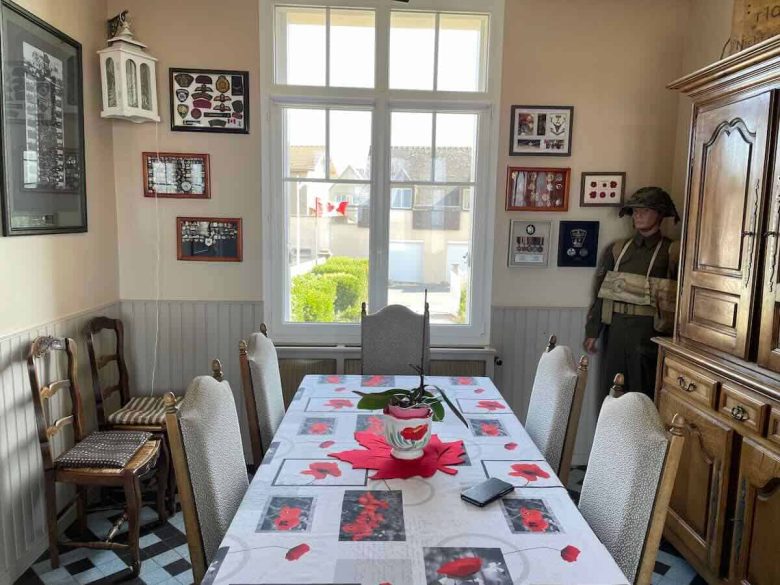

In the living room and dining room, many interesting artifacts and souvenirs are on display including photos, equipment, helmets, medals, newspaper clippings, and even a Morse code machine. There is also a mannequin fully outfitted in a uniform. These were items offered to Canada House by veterans, regiments, or people visiting the site. The embroidered flag above the fireplace was donated by soldiers of the Queen’s Own Rifles who were serving in Afghanistan.
8. Meritorious Service Medal

In 2015 the Canada House Association was established to help the Hoffers continue to maintain the house and its artifacts. In October 2022, Hervé (posthumously) and Nicole were awarded the Meritorious Service Medal by the Canadian Ambassador to France, Stéphane Dion. This was on behalf of the Governor General of Canada, Her Excellency the Right Honourable Mary Simon.
The medal was created by Queen Elizabeth II in 1991 and “recognizes a military deed or activity that has been performed in a highly professional manner or of a very high standard that brings benefit or honour to the Canadian Forces.”
In the photo above, Nicole is wearing the medal at the Juno Beach D-Day Anniversary reception. I am with her and Captain (retired) Yves Germain Director of the Canadian Battlefields Foundation.
9. Events At Canada House On The June 6th Anniversary
At Canada House on June 6 there are two D-Day anniversary commemorative events. The morning ceremony is attended by representatives of the Canadian embassy and military from various regiments, soldiers in 1940s uniforms, and bagpipers. There is the laying of wreaths in front of the house.
The evening ceremony has pipers from Pegasus Pipes and Drums and the traditional Lantern Ceremony. A paraffin lantern is brought down to the beach and sent into the English Channel. It is a symbolic gesture of thanks to the Canadian soldiers who stormed the beaches on D-Day and fought for our freedom.
My visit to Canada House and the warm welcome from Nicole Hoffer has left me with an everlasting memory of the kindness of the French and an even great understanding of the history and sacrifices of the Canadian troops during World War II.
Canada House-La Maison des Canadiens
Address: 34 Prom. des Français, 14990 Bernières-sur-Mer
Facebook page: https://www.facebook.com/CanadaHouseLaMaisonDesCanadiens
Contact: contact@maisondescanadiens.fr or use the contact form on the website
Website: https://www.maisondescanadiens.fr
For more information about June 6, 1944, check out this post: D-Day and the Normandy Invasions
My experience at Canada House was part of my 37th trip to France. For more information, check out my itinerary here: Trip #37 To France: 18 Days In Normandy and Burgundy.
Pin to your favourite board on Pinterest


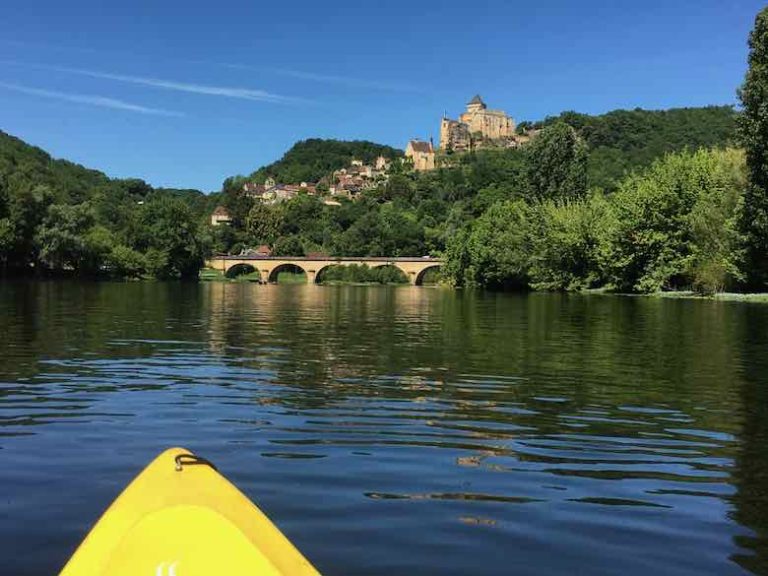

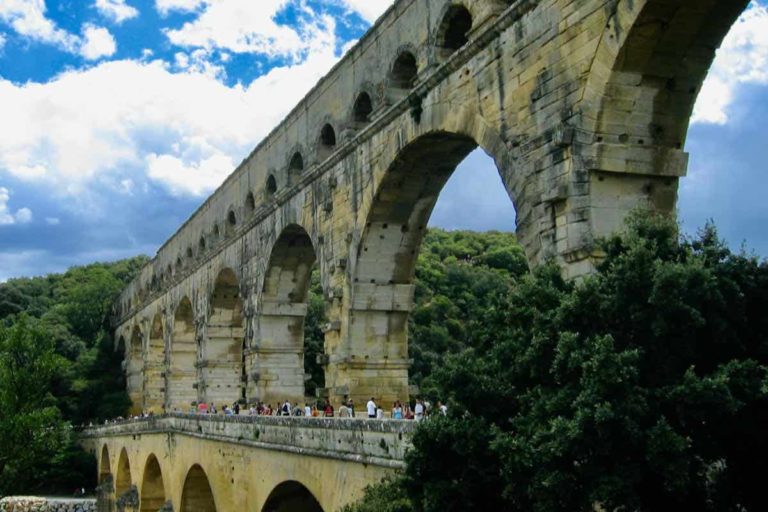
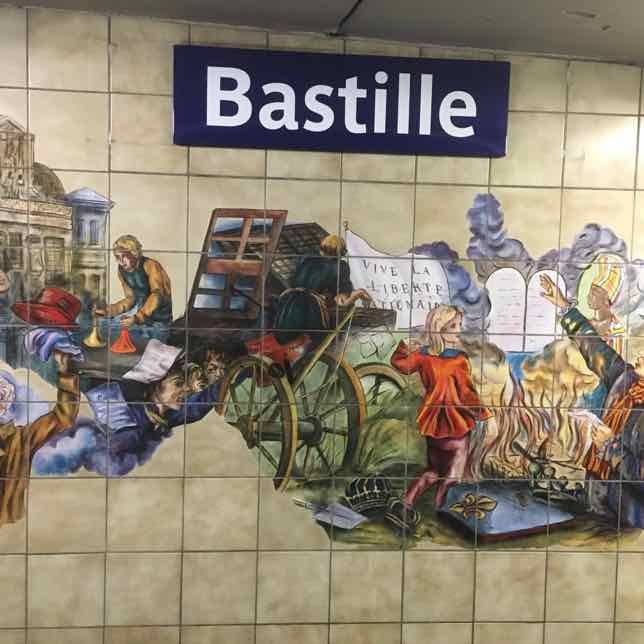

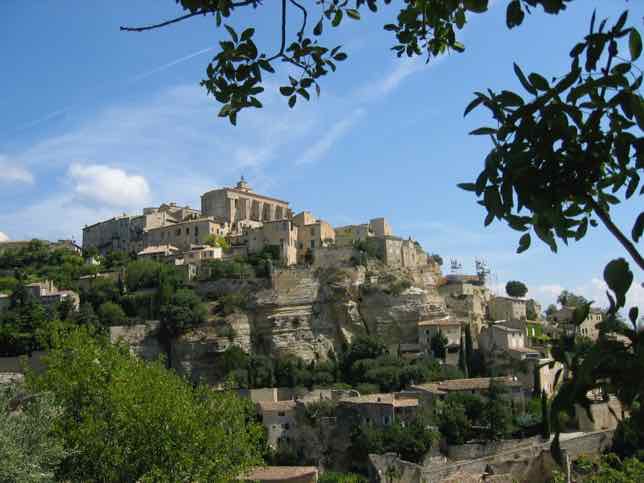
In September 2004 my wife and I had the great honor of being invited into Canada House by Mr. Hoffer himself after I saw him in his yard. I asked him if I could take a picture with him and he readily agreed. when he saw my Canada t-shirt he asked me into the house and showed me all of his memorabilia. my French was not good and his English not much better but we talked like kids over things that he had collected. we were there over an hour and all the women were getting antsy to leave as they were supposed to leave to go to their home an hour before. As a war buff, I was like a kid in a candy shop! one of the most exciting times of my life so far.
Thank you for sharing this. What a lovely story and opportunity to meet Mr. Hoffer. I felt the same way meeting Mrs. Hoffer. What an experience to hear the wonderful stories about WWII.